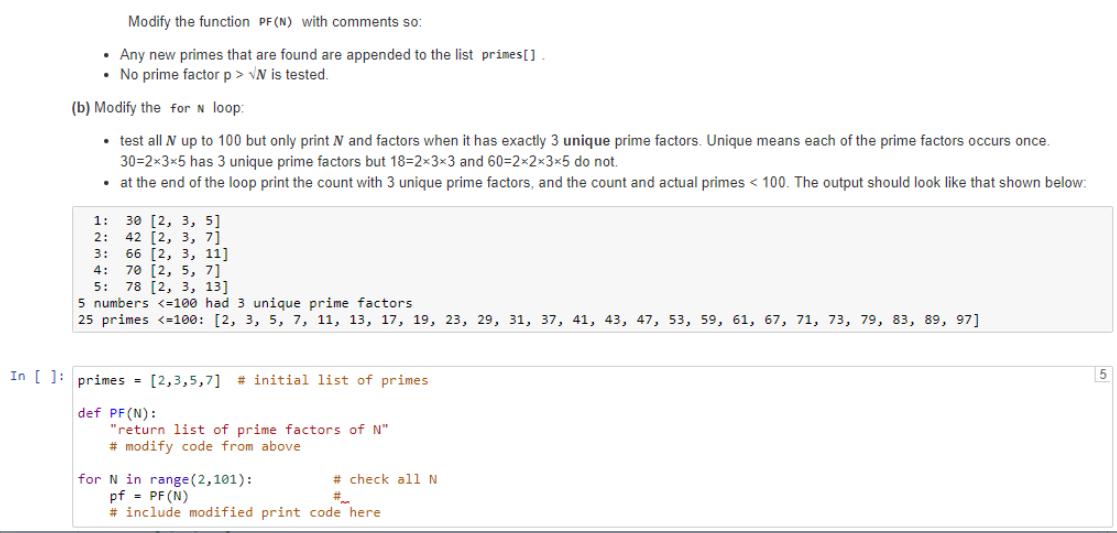Question
Modify the function PF (N) with comments so: Any new primes that are found are appended to the list primes [] No prime factor

Modify the function PF (N) with comments so: Any new primes that are found are appended to the list primes [] No prime factor p > VN is tested. (b) Modify the for N loop: test all N up to 100 but only print N and factors when it has exactly 3 unique prime factors. Unique means each of the prime factors occurs once. 30=235 has 3 unique prime factors but 18-233 and 60=2235 do not. at the end of the loop print the count with 3 unique prime factors, and the count and actual primes < 100. The output should look like that shown below: 1: 30 [2, 3, 5] 2: 42 [2, 3, 7] 3: 66 [2, 3, 11] 4: 70 [2, 5, 7] 5: 78 [2, 3, 13] 5 numbers
Step by Step Solution
3.43 Rating (159 Votes )
There are 3 Steps involved in it
Step: 1
I can help you modify the PF function and the for loop as per your requirements with comments explai...
Get Instant Access to Expert-Tailored Solutions
See step-by-step solutions with expert insights and AI powered tools for academic success
Step: 2

Step: 3

Ace Your Homework with AI
Get the answers you need in no time with our AI-driven, step-by-step assistance
Get StartedRecommended Textbook for
Income Tax Fundamentals 2013
Authors: Gerald E. Whittenburg, Martha Altus Buller, Steven L Gill
31st Edition
1111972516, 978-1285586618, 1285586611, 978-1285613109, 978-1111972516
Students also viewed these Programming questions
Question
Answered: 1 week ago
Question
Answered: 1 week ago
Question
Answered: 1 week ago
Question
Answered: 1 week ago
Question
Answered: 1 week ago
Question
Answered: 1 week ago
Question
Answered: 1 week ago
Question
Answered: 1 week ago
Question
Answered: 1 week ago
Question
Answered: 1 week ago
Question
Answered: 1 week ago
Question
Answered: 1 week ago
Question
Answered: 1 week ago
Question
Answered: 1 week ago
Question
Answered: 1 week ago
Question
Answered: 1 week ago
Question
Answered: 1 week ago
Question
Answered: 1 week ago
Question
Answered: 1 week ago
Question
Answered: 1 week ago
Question
Answered: 1 week ago
Question
Answered: 1 week ago
View Answer in SolutionInn App



